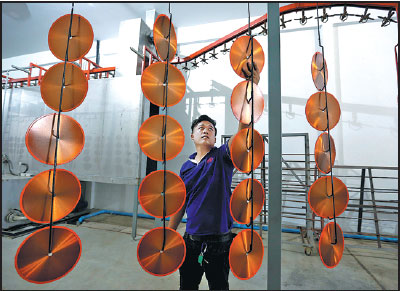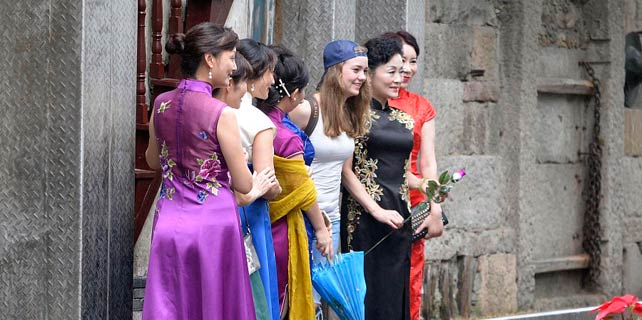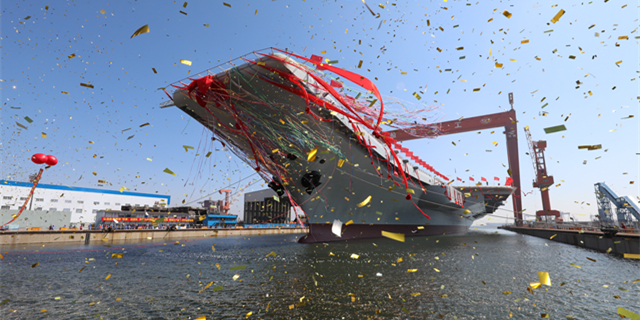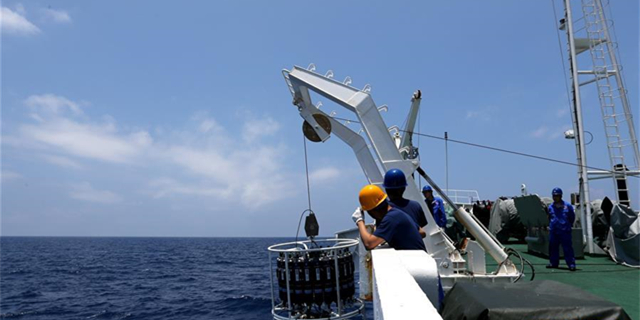'Land of Smiles' welcomes new opportunities
Thailand's economy is developing rapidly as a result of increased Chinese investment. Xu Wei reports from Bangkok, with Cang Wei in Hangzhou.
Editor's note: This is the seventh in a series of reports focusing on the development of the Belt and Road Initiative, the proposed extended trading route linking Asia, Europe and Africa.
When Xu Genluo arrived in Thailand in 2000, he barely knew anyone and spoke very little Thai. At the time, the executive with Holley Worldwide Holdings, a private developer of electrical equipment in Hangzhou, Zhejiang province, was uncertain if his business would grow because there was little Chinese investment in the country, which styles itself "The Land of Smiles".

Now, the company operates an industrial zone in Rayong, a city on the east coast of the Gulf of Thailand, in partnership with a local business. Total investment has reached $2.5 billion and 86 Chinese companies operate in the zone.
"To us, the Belt and Road Initiative has provided a boost when we needed it most," he said, referring to two proposed trade routes, officially called the Silk Road Economic Belt and the 21st-Century Maritime Silk Road.
Data provided by the Chinese embassy in Bangkok show that China has been Thailand's largest trade partner since 2013, the year the initiative was proposed by President Xi Jinping. Last year, the total import/export volume between the two countries was $65.8 billion, an increase of 2.5 percent from 2015, according to the Ministry of Commerce.
Thailand's main exports to China are plastics and rubber products, plus mechanical and electrical goods. In return, a wide range of machinery and electronic items account for about 50 percent of China's exports to Thailand.
The country - home to one of the largest groups of ethnic Chinese in the world and a gateway to Southeast Asia's 600 million consumers - is a favored destination for Chinese investment.
Last year, China was the third-largest investor in Thailand, following Singapore and Japan, according to the Board of Investment of Thailand.
The number of Chinese tourists visiting the country also has soared in recent years. Last year, there were 8.77 million trips, more than four times the number in 2013, according to the Tourism Authority of Thailand.
Zhang Peidong, economic and commercial counselor at China's embassy in Bangkok, said Thailand's development plans and national strategies are a good fit for the Belt and Road Initiative, and will offer new business opportunities for Chinese companies.
However, for the investments to succeed, companies must develop a culture of cooperation, build good brands and obey local laws and conventions, according to a report Zhang wrote last year that was posted on the embassy's website.
In February, Hirunya Suchinai, secretary-general of the Board of Investment of Thailand, told Sing Sian Yer Pao Daily News, a Chinese-language publication in the country, that the initiative has boosted domestic development.
She hopes to see more Chinese investment in the biotechnology, nanotechnology and digital technology sectors to help Thailand reach the targets set in Thailand 4.0, a new, government-designed economic model to develop high-tech industries and innovation.
Ideal location
Xu said Thailand's location, close to the center of the area covered by the Association of Southeast Asian Nations, makes it an ideal choice for Chinese investors exploring related markets.
The Thai-Chinese Rayong Industrial Zone, about 200 km southeast of Bangkok, has been jointly developed by Holley and Amata, a Thai industrial estate developer.
Established in 2012, the facility has total investment of more than $2.5 billion. It employs 3,000 Chinese nationals.
As of April, 86 Chinese-owned solar, rubber and industrial manufacturing plants had opened in the zone.
Xiao Qijing, Holley's CEO, said the company had to overcome many difficulties when it started to invest in Thailand, and the purpose of establishing the zone was to prevent other companies from experiencing similar problems.
"Our experience tells us that a third party is needed in Sino-Thai industrial cooperation," he said. "They should explain local policies to companies investing in Thailand and also tell the Thai government what the companies need. We want to share our experiences with those companies and make it easier for them to invest. We would like to see a win-win situation."
Wang Licheng, chairman of Holley's board, had the idea for the zone when he met with one of Thailand's biggest industrial property companies.
"We offer a 'one-stop' service for investors," he said. "That includes market research, policy consultations and staff recruitment. Many government departments, such as customs, tax and power, have been invited to the zone to talk with investors and solve problems."
According to the company, 90 percent of Chinese businesses investing in Thailand have opened premises in the zone, which welcomed one of the country's largest rubber producers when it opened in 2006. Moreover, the number of companies that have opted to use the zone has risen significantly since 2012.
In March last year, China's Trina Solar, one of the world's leading makers of solar panels, opened a manufacturing facility in the zone. Meanwhile, Futong Group, a manufacturer of optical cables in Hangzhou, Zhejiang province, barely exported to the ASEAN market before it opened a factory in the facility. Now, it is among the world's biggest suppliers of optical cables.
ZC Rubber, one of China's largest makers of rubber products, recently decided to add a new production line for industrial tires in the zone. The line will begin operations in May.
In 2015, the company launched its first overseas factory in the zone, and since then, it has produced millions of tires for cars and light and heavy trucks.
"Our market research suggests that Southeast Asian demand for industrial tires is rising. We will target industrial products to meet our customers' demands," said Li Ying, the company's marketing director.
Wu Guangyun, Holley's vice-president, said the zone has created more than 20,000 jobs for local people, who account for more than 95 percent of the workforce.
"Before the zone was established, most of the workers earned less than 1,000 yuan ($145) a month," he said. "Now, their salaries have tripled. We also plan to establish a number of technical schools for local farmers."
He added that by 2020, when construction of the 12-square-kilometer zone is complete, there will be enough space and equipment for 300 companies.
Wang said Holley hopes to replicate the Rayong zone model in other countries, such as Mexico and Myanmar, to help Chinese overseas investments thrive.
Xu said Chinese investors must be prepared to undertake sufficient homework and be prepared to adapt to local laws and regulations: "Chinese who want to achieve something in Thailand have to adapt to the local society and behave like Thai people do."
Contact the writer at xuwei@chinadaily.com.cn
|
An employee arranges blades for circular saws at an assembly line at Gang Yan Diamond Tools, a Chinese manufacturing plant, located in the Thai-Chinese Rayong Industrial Zone in Rayong, southeast of Bangkok.Chaiwat Subprasom/reuters |
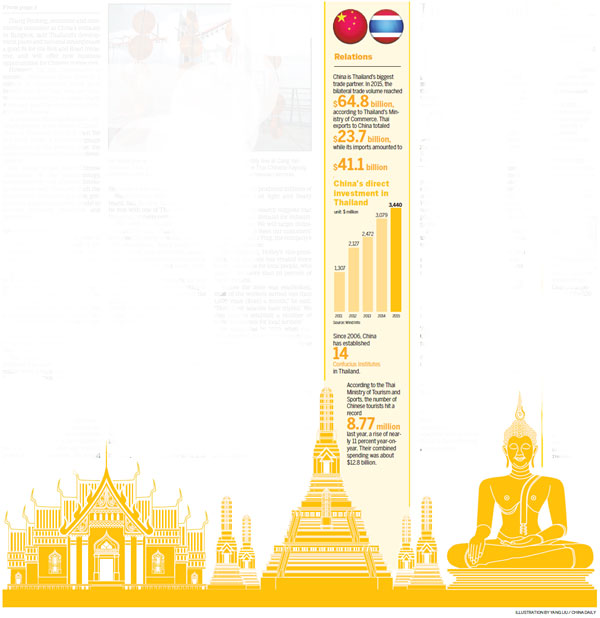
(China Daily 04/27/2017 page1)







